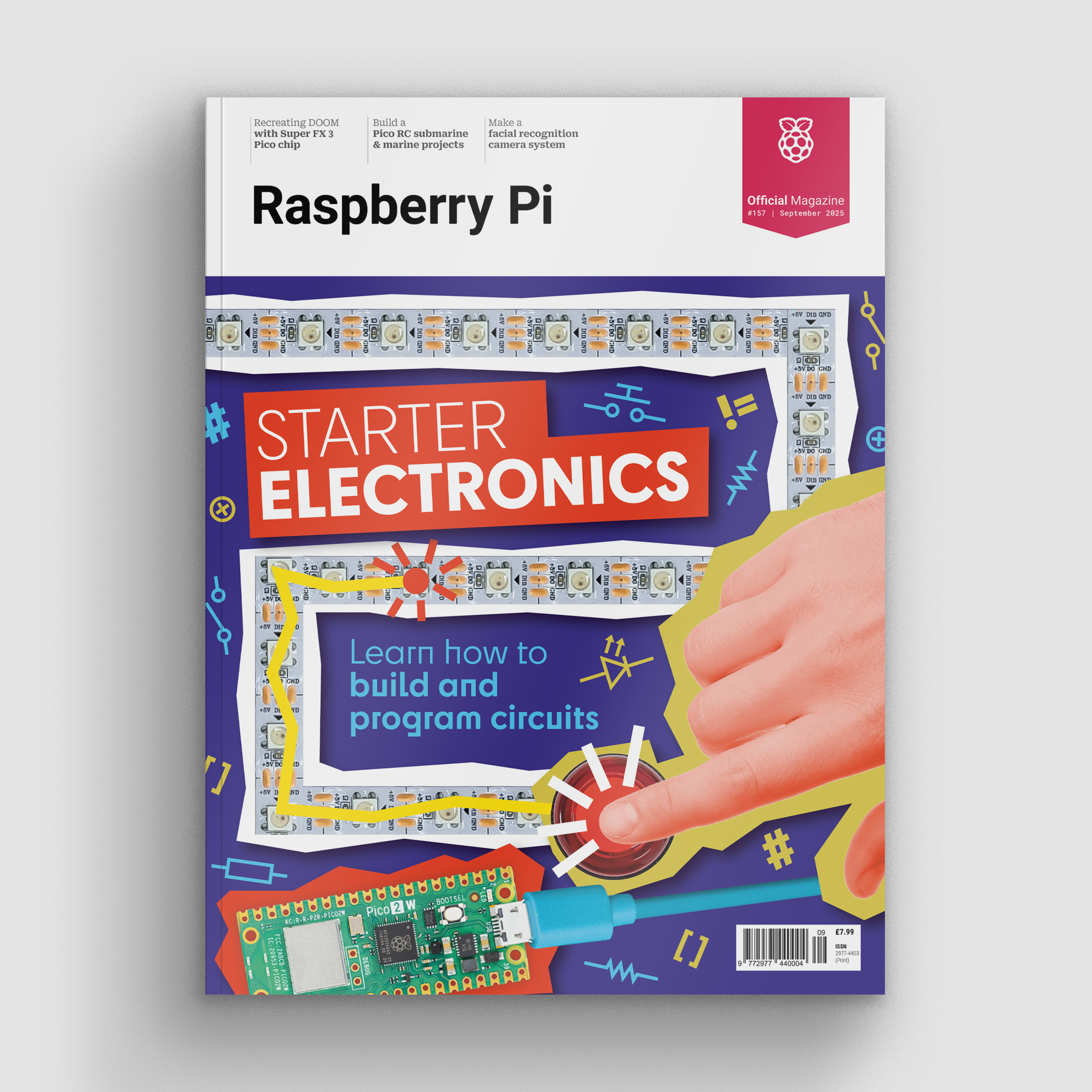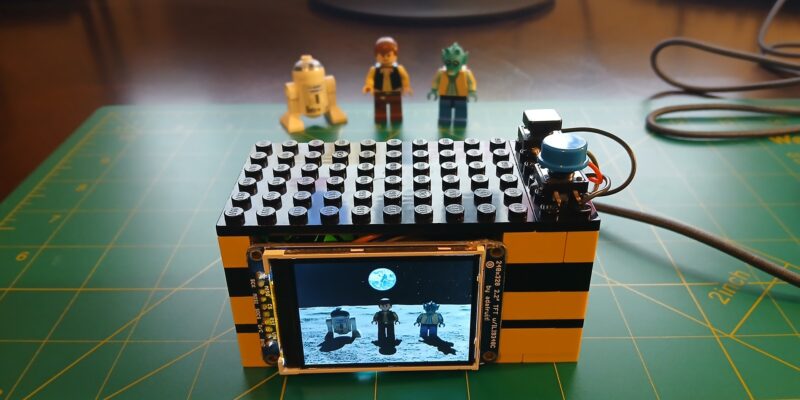Starter Electronics in Raspberry Pi Official Magazine 157
By Andrew Gregory. Posted

One of the wins that makes Raspberry Pi the most versatile little credit card-sized computer of all is the presence of the GPIO pins. These pins give the user the ability to send electrical signals to comonents such as transistors, LEDs, buzzers and switches to create simple circuits. What’s more, you can control these circuits using a bit of code, written on your Raspberry Pi. Join us as we get started with simple electronics, and learn how to control the world around you.
Advertisement
Christmas is coming – keep Santa on the right track with our Raspberry Pi gift guide!


After you’ve built your own simple circuit, why not think a little bit bigger – like building a product, and getting that product verified as officially Powered By Raspberry Pi? We take a look at some of the brilliant gadgets with Raspberry Pi at their heart.

If you want to build a submarine, you might want to think carefully about putting yourself in a flimsy tube at 400 times the atmospheric pressure of the Earth’s surface. Don’t let that put you off though: you can always explore the depths of your bathtub with 3D printing, off the shelf components, and a Raspberry Pi Pico.

You may not have realised it, but new versions of games for old consoles are still being released. Take this beautiful re-release of Doom, now with new levels, new features, faster frame rate and loads of other improvements. It’s an actual physical cartridge for the Nintendo SNES, and at its heart there’s an RP2350 chip.

The Build HAT is a Lego Education-compatible device that enables Raspberry Pi to control Technic motors and sensors. It’s a fantastic bit of kit, and now the firmware for it is open source, having been released under a BSD licence.

Wouldn’t it be nice to have a laptop running Raspberry Pi OS, built on a Compute Module 5, with accessible GPIO pins? We certainly think so, and so do the folks at Argon Forty, who have built the Argon ONE UP laptop. We’ve taken a sneak peek, and we think it’s shaping up nicely.

The Atanasoff-Berry Computer (which handily abreviates to ABC) was one of the first digital computers; but it wasn’t recognised as such at the time. it took a lawsuit in the 1970s to uncover the pioneering work done by John Atanasoff and Clifford Berry – and you can read all about it in issue 157.
There’s a whole heap more for your perusal in Raspberry Pi Official Magazine 157 – grab your copy today, or subscribe to never miss an issue.

Features Editor Andrew trawls the internet for Cool Stuff while keeping the magazine running smoothly.
Subscribe to Raspberry Pi Official Magazine
Save up to 37% off the cover price and get a FREE Raspberry Pi Pico 2 W with a subscription to Raspberry Pi Official Magazine.
Sign up to the newsletter
Get every issue delivered directly to your inbox and keep up to date with the latest news, offers, events, and more.


